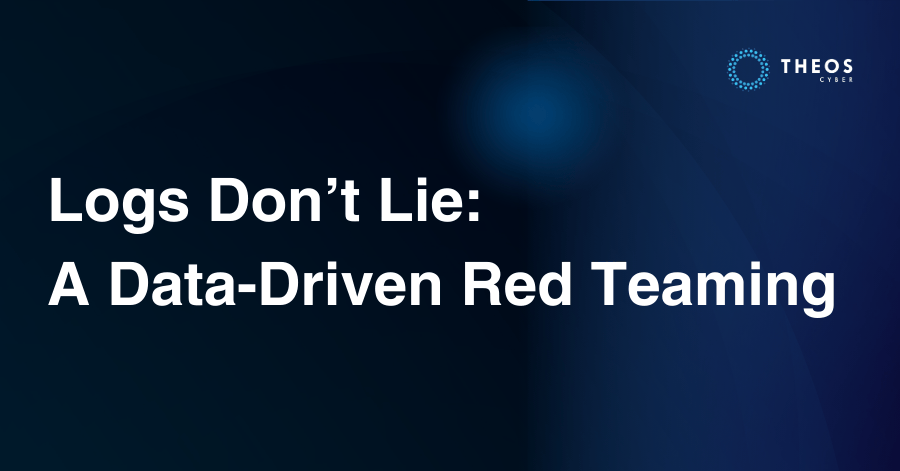
By: Felix Mendoza
Introduction
Red Teaming is often seen as the ultimate test of an organization’s defences. By simulating real-world attacks, red teams uncover vulnerabilities, test detection capabilities, and assess the overall resilience of targets. Yet, amid the tactics, tools, and creativity that define these operations, one critical element is frequently overlooked: log collection.
Logs serve as a witness to every interaction within a system. They document actions, highlight anomalies, and provide abundant insights on every engagement step. In this post, we will explore why logs are not just a supporting detail but a strategic necessity in red teaming. Whether you’re a red team operator, SOC analyst, or part of an organization looking to strengthen its cybersecurity posture, understanding the role of logs can elevate the impact of your security exercises.
Why Logs Matter in Red Teaming
Logs are structured records of endpoint and network activity, ranging from basic logs to detailed records from firewalls, proxies, and other applications/servers integrated into the red team infrastructure. For red teams, logs serves as a comprehensive map of the operators’ activities and the target organization’s potential responses.
Without logs, red teams would lack the data needed to assess the impact of their actions and the effectiveness of the organization’s defences. Logs are not just about looking back; they’re about understanding how to move forward.
Core Benefits of Log Collection
Red Team Activities
Logs provide a real-time or post-event view of every action taken by the red team. From scanning to exploitation, every step is accounted for. This visibility is crucial for tracking the success of specific Tactics, Techniques, and Procedures (TTPs) performed and ensuring scenarios remain aligned with real-world adversary behaviours.
This approach also ensures compliance with the rules of engagement. Should any questions about collateral impact arise, the logs provide a transparent record of actions taken as evidence of diligence.
Post-Engagement Analysis
A detailed debrief should have proper evidence. Collecting logs allows the red team to reconstruct their activities and create a comprehensive timeline. This data is invaluable for reporting to stakeholders and providing actionable recommendations.
Identify Blind Spots
Collected logs can be cross-referenced with logs from the blue team’s responses. The red team can identify potential lapses and reveal gaps in an organization’s visibility. Missing or incomplete logs can point to unmonitored systems or poorly configured security tools/controls, which can be detrimental. This would enable organizations to focus on critical areas and guide the improvement of their detection systems.
Enabling Better Defences
Detection Improvement
Were certain payloads prevented? Was there no rate limiting enforced? Or were there unusual interactions between two non-critical systems? Logs help answer these questions and reveal patterns useful for creating or optimizing detection rules and policies. Such patterns can also help the blue team proactively search for malicious activity in their environments and enhance their threat-hunting capabilities.
Purple Teaming Exercises
Logs will play a pivotal role in collaborative exercises where red and blue teams work together. Red team engagements can create a perfect simulation for incident response processes, and logs generated from this exercise can be used as a reference for refining playbooks. It helps ensure that they are ready to respond effectively to real-world threats. This overall collaboration also enables both parties to enhance their skill sets and build a stronger defence strategy.
Common Challenges in Log Collection
Despite their value, effective log collection is not plug-and-play. Organizations must address several key challenges:
Completeness: Are all relevant systems logging correctly?
Centralization: Are logs properly aggregated in a single platform?
Storage and Retention: What is the total log capacity, and how long should they be stored?
Integrity: Are logs secure from unauthorized access or manipulation?
Consistency: Are timestamps across all log sources consistent?
Overcoming these challenges requires careful planning and a robust infrastructure. Ongoing investment is needed to ensure that log data remains reliable and actionable.
Conclusion
Log collection is more than a record-keeping exercise; it is a fundamental aspect of red teaming that drives actionable insights and meaningful improvements. From validating detections to exposing blind spots and supporting collaborations with the blue team, logs are the unsung heroes of effective engagements. They serve as blueprints for continuous improvement to develop a more robust cybersecurity posture.
THEOS Red Teaming
THEOS Cyber’s Red Teaming simulates real-world attacks to assess your organization’s ability to detect, respond, and recover from advanced threats. Our experts emulate real adversaries to identify critical gaps in your systems, people, and processes.
We go beyond standard testing to challenge your defences in a controlled, intelligence-driven manner, providing clear and actionable insights to improve your security posture.
Learn more: https://theos-cyber.com/solutions/red-teaming/

